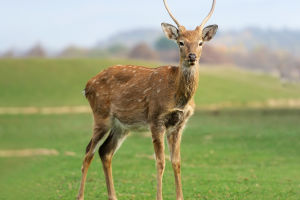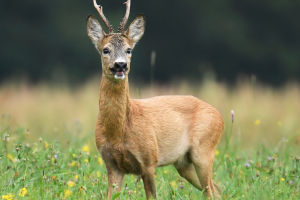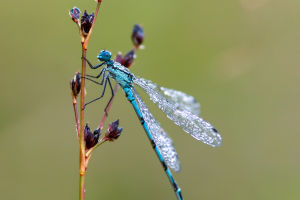The sheep are grazing leisurely on the pasture, and this scene reflects the beauty and harmony of nature.
The vast green pasture resembles a huge blanket spread across the earth. Against the blue sky and white clouds, the sheep move slowly on the grass, quietly and peacefully enjoying the abundant greenery.
This image not only evokes a sense of peace but also prompts deeper thoughts about the relationship between nature and humans.
Pastures, as a traditional form of agriculture, have a long history in many countries and regions. As one of the main livestock raised on pastures, sheep have become an integral part of the rural economy and way of life.
Sheep herding is not only a means of livelihood for farmers but also a cultural heritage. Pastures in different regions may have their unique characteristics, but the image of sheep wandering in them carries a similar sense of tranquility.
This harmonious scene demonstrates not only nature's abundance but also the positive interaction between humans and the environment.
Sheep are gentle and social animals by nature. On the pasture, they often gather in small groups, maintaining a certain sense of order. Although there is no obvious leader, they manage to move in an orderly manner across the pasture.
This natural collaboration is fascinating to humans and shows how individuals within a group can create a unified force through subtle interactions.
The process of shepherding is both simple and complex. While it may seem that the sheep are grazing unconsciously, their behavior is highly coordinated. The grass on the pasture needs time to rest and recover; overgrazing can lead to land degradation, which affects the ecological balance.
Shepherds must carefully manage grazing time and the number of sheep, considering factors like seasons and climate, to ensure the pasture remains healthy. This management is not only focused on economic benefits but also on ecological sustainability.
Pastures not only provide abundant food for sheep but also serve as habitats for other organisms. The ecological environment around many pastures is diverse, often becoming a haven for birds, insects, and even small mammals.
In this complex ecosystem, sheep play a unique role. Their grazing helps control the height of the grass, preventing overgrowth and maintaining the dynamic balance of the ecosystem. This natural cycle supports sustainable pasture development and offers humans valuable natural resources.
However, with advancements in modern agricultural technology and the acceleration of urbanization, traditional pastures are gradually disappearing. Many pastures have been developed into residential areas or industrial parks, making the image of sheep grazing freely on vast grasslands increasingly rare.
In many developed countries, sheep herding has shifted from being a major economic activity to becoming more of a symbolic cultural landscape, with tourism emerging as a new economic driver. Tourists are drawn to the peaceful and serene scenes on pastures, seeking moments of tranquility away from the hustle and bustle of city life.
Although modern pastures have changed significantly in terms of management and technology, the image of sheep grazing leisurely still retains a sense of human longing for nature.
Many pastures now use advanced technologies such as drones to monitor pasture conditions or modern feeding equipment to ensure the health of the sheep.
Despite these advancements, the traditional lifestyle of pasture life still maintains its unique charm. The cooperation between shepherds and sheep, and the harmonious relationship between humans and nature, cannot be replaced by technology.
The image of sheep grazing on the pasture is not only a part of agricultural production but also a symbol of the relationship between humans and nature. Through proper pasture management, humans and nature can achieve harmonious coexistence.
The tranquility and beauty of the pasture remind people that only by respecting and protecting nature can we continue to enjoy its gifts.
Whether in traditional pasture life or on modern, technologically advanced farms, the image of sheep grazing leisurely serves as a beautiful symbol of the harmonious relationship between humans and nature.


